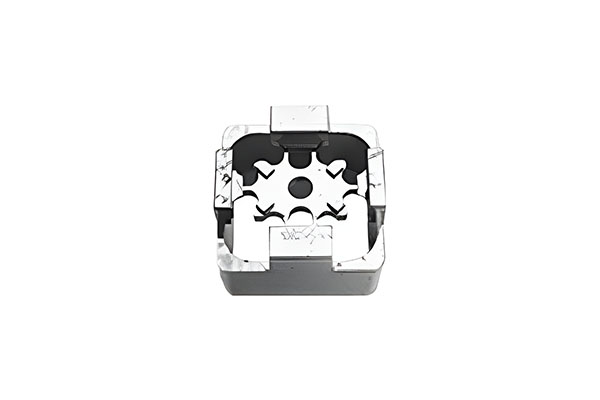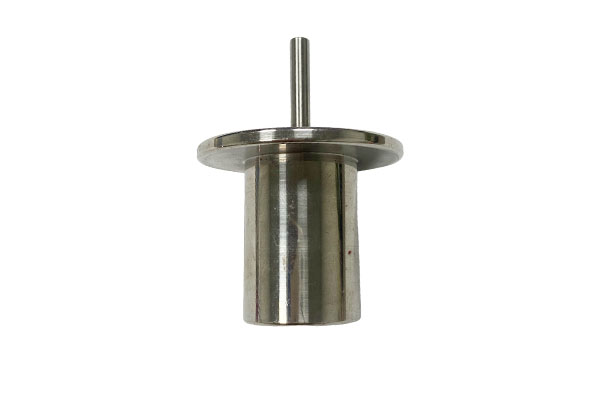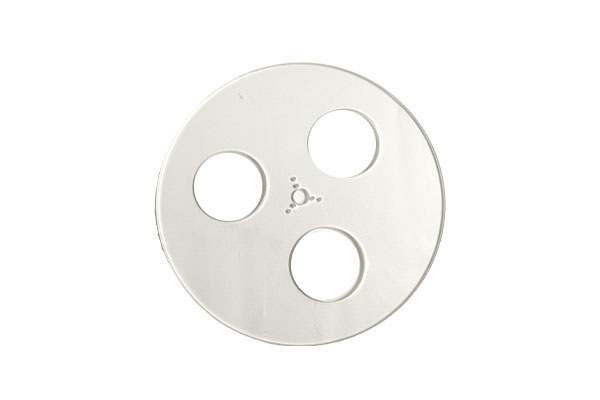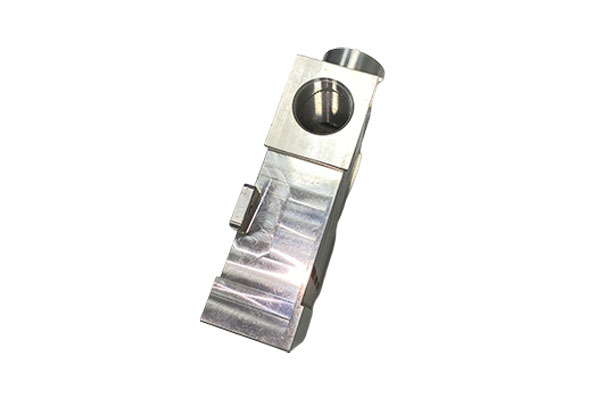How does hardware five-axis parts processing achieve single-clamping, high-rigidity molding of complex curved parts for large-sized silicon wafer transfer mechanisms?
Release Time : 2025-10-09
Amid the rapid development of the new energy photovoltaic industry, large-sized silicon wafers have become the mainstream production specification, placing higher demands on the precision, stability, and automation of photovoltaic equipment. The silicon wafer transfer mechanism, a core component in crystalline silicon cell production lines, is responsible for accurately and non-destructively handling fragile silicon wafers between processes such as cleaning, diffusion, etching, and coating. This mechanism incorporates numerous metal components with complex curves and high geometric tolerances, such as robotic arm joints, vacuum chuck supports, and guide rail bases. Using hardware five-axis parts processing technology, achieving "single-clamping, high-rigidity molding" for these parts is key to improving equipment performance and manufacturing efficiency.
1. Single-Clamping: The Core Path to Precision Assurance
Traditional three-axis machining centers often require multiple clampings and tooling and tool changes when working with complex curved surfaces. This is not only time-consuming and labor-intensive, but also leads to cumulative tolerance violations due to repeated positioning errors, compromising part assembly accuracy. Five-axis machining technology utilizes the coordinated motion of the three linear axes (X, Y, and Z) and the two rotary axes (A and C) to enable the tool to approach the workpiece surface from any angle, achieving continuous cutting on multiple surfaces and angles. For irregularly shaped supports or curved guide rails in wafer transfer mechanisms, five-axis machine tools can complete roughing, semi-finishing, and finishing in a single clamping, completely eliminating the datum offset issues associated with multiple clampings. This ensures micron-level accuracy in position, parallelism, and contour accuracy between holes, flat surfaces, and curved surfaces, meeting the stringent repeatability standards of automated equipment.
2. High-rigidity Molding: The Process Foundation for Structural Stability
Wafer transfer mechanisms are subject to frequent starts and stops, as well as vibration loads during high-speed reciprocating motion. Inadequate support component rigidity can easily lead to elastic deformation or resonance, resulting in positioning drift, wafer breakage, and shortened equipment life. Therefore, high structural rigidity is essential for these metal components. Five-axis metal machining achieves "high-rigidity molding" through optimized material selection and cutting strategies. On the one hand, five-axis machine tools, equipped with high-torque spindles and rigid toolholder systems, enable aggressive cutting modes with large cutting depths and high feed rates, ensuring efficient material removal while preserving sufficient wall thickness and support structures. Furthermore, through five-axis directional machining, critical load-bearing and reference surfaces can be prioritized for machining, using these high-precision surfaces as support for subsequent machining, enhancing overall structural stability. Furthermore, five-axis machining allows for the use of short tools at optimal cutting angles, reducing tool overhang, effectively suppressing vibration, and improving surface quality and dimensional consistency.
3. Complex Curved Surfaces: The Natural Advantage of Five-Axis Coordination
Components in wafer transfer mechanisms often incorporate free-form surfaces, angled holes, and undercuts designed to reduce weight, avoid cable routing, or optimize airflow. These features are difficult to machine on three-axis machines or require complex specialized fixtures. Five-axis machining, however, uses a rotary table to adjust the workpiece to the optimal machining position, ensuring the tool always cuts perpendicular to the curved surface. This not only ensures a smooth surface finish but also effectively avoids overcutting or undercutting. For example, multi-angle air holes on vacuum cup supports can be created in a single operation using five-axis drilling, ensuring airtightness. Special-shaped contours on robotic arm connectors can also be directly formed using five-axis precision milling, eliminating the need for subsequent manual adjustment.
4. Process Integration and Intelligent Control: Improving Overall Efficiency
Modern five-axis machining centers often integrate high-precision probe measurement, tool length compensation, and thermal deformation compensation systems, enabling real-time monitoring of workpiece position and tool status during machining, achieving closed-loop control. For large parts, modular tooling and flexible positioning systems can be combined to quickly adapt to the machining needs of different transfer mechanisms. Furthermore, five-axis toolpath simulation and collision detection using CAM software ensure safe and error-free machining, further improving the success rate and production efficiency of single-clamping setups.
In summary, five-axis parts processing, with its multi-axis linkage, single-clamping capabilities, high-rigidity cutting, and complex surface forming capabilities, has become the preferred process for manufacturing key metal parts for large-scale silicon wafer transfer mechanisms. It not only significantly improves the geometric accuracy and structural performance of parts, but also shortens the production cycle, reduces assembly difficulty, and provides a solid guarantee for the high-reliability operation of photovoltaic equipment.
1. Single-Clamping: The Core Path to Precision Assurance
Traditional three-axis machining centers often require multiple clampings and tooling and tool changes when working with complex curved surfaces. This is not only time-consuming and labor-intensive, but also leads to cumulative tolerance violations due to repeated positioning errors, compromising part assembly accuracy. Five-axis machining technology utilizes the coordinated motion of the three linear axes (X, Y, and Z) and the two rotary axes (A and C) to enable the tool to approach the workpiece surface from any angle, achieving continuous cutting on multiple surfaces and angles. For irregularly shaped supports or curved guide rails in wafer transfer mechanisms, five-axis machine tools can complete roughing, semi-finishing, and finishing in a single clamping, completely eliminating the datum offset issues associated with multiple clampings. This ensures micron-level accuracy in position, parallelism, and contour accuracy between holes, flat surfaces, and curved surfaces, meeting the stringent repeatability standards of automated equipment.
2. High-rigidity Molding: The Process Foundation for Structural Stability
Wafer transfer mechanisms are subject to frequent starts and stops, as well as vibration loads during high-speed reciprocating motion. Inadequate support component rigidity can easily lead to elastic deformation or resonance, resulting in positioning drift, wafer breakage, and shortened equipment life. Therefore, high structural rigidity is essential for these metal components. Five-axis metal machining achieves "high-rigidity molding" through optimized material selection and cutting strategies. On the one hand, five-axis machine tools, equipped with high-torque spindles and rigid toolholder systems, enable aggressive cutting modes with large cutting depths and high feed rates, ensuring efficient material removal while preserving sufficient wall thickness and support structures. Furthermore, through five-axis directional machining, critical load-bearing and reference surfaces can be prioritized for machining, using these high-precision surfaces as support for subsequent machining, enhancing overall structural stability. Furthermore, five-axis machining allows for the use of short tools at optimal cutting angles, reducing tool overhang, effectively suppressing vibration, and improving surface quality and dimensional consistency.
3. Complex Curved Surfaces: The Natural Advantage of Five-Axis Coordination
Components in wafer transfer mechanisms often incorporate free-form surfaces, angled holes, and undercuts designed to reduce weight, avoid cable routing, or optimize airflow. These features are difficult to machine on three-axis machines or require complex specialized fixtures. Five-axis machining, however, uses a rotary table to adjust the workpiece to the optimal machining position, ensuring the tool always cuts perpendicular to the curved surface. This not only ensures a smooth surface finish but also effectively avoids overcutting or undercutting. For example, multi-angle air holes on vacuum cup supports can be created in a single operation using five-axis drilling, ensuring airtightness. Special-shaped contours on robotic arm connectors can also be directly formed using five-axis precision milling, eliminating the need for subsequent manual adjustment.
4. Process Integration and Intelligent Control: Improving Overall Efficiency
Modern five-axis machining centers often integrate high-precision probe measurement, tool length compensation, and thermal deformation compensation systems, enabling real-time monitoring of workpiece position and tool status during machining, achieving closed-loop control. For large parts, modular tooling and flexible positioning systems can be combined to quickly adapt to the machining needs of different transfer mechanisms. Furthermore, five-axis toolpath simulation and collision detection using CAM software ensure safe and error-free machining, further improving the success rate and production efficiency of single-clamping setups.
In summary, five-axis parts processing, with its multi-axis linkage, single-clamping capabilities, high-rigidity cutting, and complex surface forming capabilities, has become the preferred process for manufacturing key metal parts for large-scale silicon wafer transfer mechanisms. It not only significantly improves the geometric accuracy and structural performance of parts, but also shortens the production cycle, reduces assembly difficulty, and provides a solid guarantee for the high-reliability operation of photovoltaic equipment.







